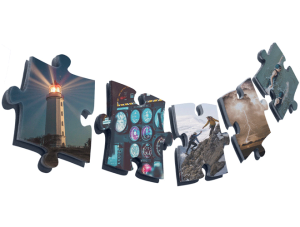May 2022
Learn to See Yourself Clearly through the Johari Window EMEA
Michael Futterman, Head of Knowledge Labs® Professional Development, shares how self-awareness can help put financial professionals on the right track to grow their business.
When I’ve watched Phil Jackson coach basketball teams, it always struck me as significant that Michael Jordan didn’t go that route. Jackson and Jordan had great synergy and Jordan offered so much guidance to the Chicago Bulls.
Then again, it’s easy to attribute positive qualities to professional athletes. These hard workers are usually filled with a drive for excellence, they work well around people with a shared intensity, they have a unique ability to thrive under pressure and they condition themselves to rise to challenges.
Many of these skills helped my client, a former professional athlete, become a successful financial professional. Branch management recognized his growth and recommended he take on a partner and two or three junior financial professionals to further grow his business.
Unfortunately, not every athlete is meant to become a coach. Being good at something doesn’t mean you are good at teaching it. Tragically, many skilled people fail to see the limits of their capability. As we train clients to build superior teams through the Knowledge Labs Elements of Extraordinary Teamwork, we often find that a healthy dose of self-awareness can help put people on the right track to working better with those they need to help grow their business.
A few short months later, I sat in my client’s office listening to him express frustration and anger with his junior financial professionals. Exasperated, my client said “I emailed how I do it! I don’t get what’s so difficult to understand!”
As I listened to my client explain the problems at his office I realized a tool called the Johari Window would have come in handy before the new staff members joined his team. Created by psychologists Joseph Luft and Harrington Ingham, the Johari Window is composed of four quadrants:
The open quadrant: Things you know about yourself and peers know about you. The open quadrant contains obvious or explicit information. Although it’s helpful, this material can obscure or influence the information in other quadrants. For example, one might see my client, a successful financial professional, and assume he will be adept at training junior financial professionals.
The hidden quadrant: Things you know about yourself other people don’t know. Based on his background, branch management felt my client would be comfortable engaging in the journey that growing a new team often requires. I asked a couple of questions and learned something my client knew, but his peers didn’t.
I asked him why he chose to email directions to junior financial professionals, instead of talking with them, and he revealed that he felt sitting down and walking them through things step by step is frustrating. “Do you always get frustrated when you’re teaching people,” I probed.
“Yes. I had to get my son a math tutor because I get angry if he doesn’t pick things up fast enough,” my client said.
This response gave both of us insight into something we hadn’t recognized, but I’m sure his junior financial professionals were privately frustrated by every day – his unapproachability. The Johari Window model refers to this as a blind spot, which means your peers know something about you that you don’t know about yourself. While branch management might have quickly realized he was overmatched in the role of leader or coach, the client’s pride and quick temper made it difficult to tell him that.
My client is a great team player and highly motivated self-starter, who never had a management role. The fact that no one knew he would be poorly suited for the task illustrates the last quadrant of the Johari Window, the unknown.
Unknowns are things that neither you nor your peers know about you. The value in developing greater shared awareness is that it allows us to more quickly address the unknowns when they come to light. Creating strategies to increase illumination of the blind and hidden quadrants is our goal.
In this case, my client’s partner became responsible for the day-to-day people management, so my client could focus on his other strengths. Developing self-awareness before you bring on new team members is key to understanding what kinds of personalities work best in your office. Additionally, seeing yourself clearly in a situation can help you determine if your message and your method of sharing it are effective for your team.
In my client’s case we used the Johari Window to help us discover that being a great financial professional comes as naturally to him as being a great basketball player came to Michael Jordan. But the Michaels around us need self-awareness to help the team to thrive.
Subscribe for relevant insights delivered straight to your inbox










